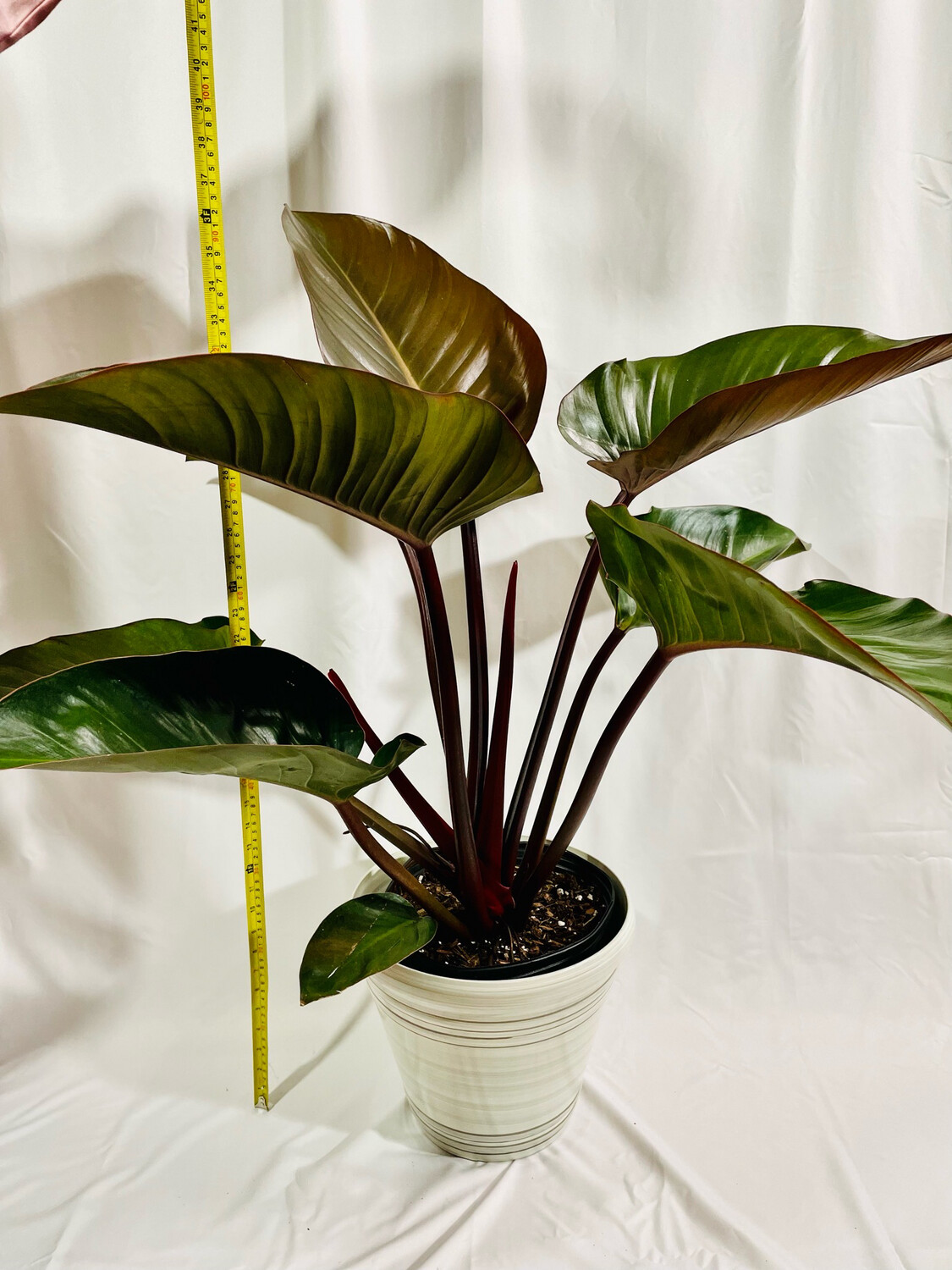Philodendron Rojo Congo 10 In Pot
Light
Philodendrons prefer bright indirect sunlight but can live in lower light conditions. When philodendrons receive less than 5 hours of indirect sunlight each day, their new leaves will emerge smaller, their vines will become leggy, and vibrant colors and variegation may fade! If you bring your philodendrons outside for the summer place them in a shady spot. Direct afternoon sunlight is a no-no for all philodendrons as the intense rays of the sun will burn the leaves, but early morning sun (from 6-8am) will do no harm. If your home does not have bright indirect sunlight, you can use artificial light as a supplement. We recommend LED grow lights turned on for 8-10 hours each day!
Water
Water the soil thoroughly after the soil is almost completely dry. It is a good indication that it needs water when the leaves start wilting. Water more often in the growing season and reduce the frequency during the winter months. It is best to refrain from watering if you cannot decide if its time to add more. Larger plants can go weeks without water, but younger, less established plants need to be watered on a regular basis until their roots have fully developed. When you water your philodendrons, water them slowly, with room temperature water and always drain any excess water from the pot. If you notice that the soil has become compacted and or so dry that it looks like a a dried up river bed, then soak the entire root ball in a bucket of water for 10 minutes, or until the water has been thoroughly absorbed into the soil. This will loosen up the compacted soil.
Soil
All philodendrons love loose, nutrient-rich potting soil. Use a soil medium that can retain moisture but also allows for draining excess water to avoid root rot. Most pre-mixed soils will suffice. Make sure that there is plenty of organic matter, like coco-coir, peat moss, or shredded leaves, and avoid soils that contain moisture retaining crystals. If your soil drains too quickly, we recommend re-potting into a compost-rich soil mixture, with less drainage materials.
Temperature
Most household temperature ranges (65-75°F) are adequate for these indoor plants. Temperatures under 55℉ will stunt their growth, and prolonged exposure to cold temperatures can be fatal for these tropical indoor plants.
Humidity
As with most tropical indoor plants, Philodendrons will benefit from higher humidity, but will do fine in average household air. Higher humidity (over 50%) is always better for tropical houseplants.

